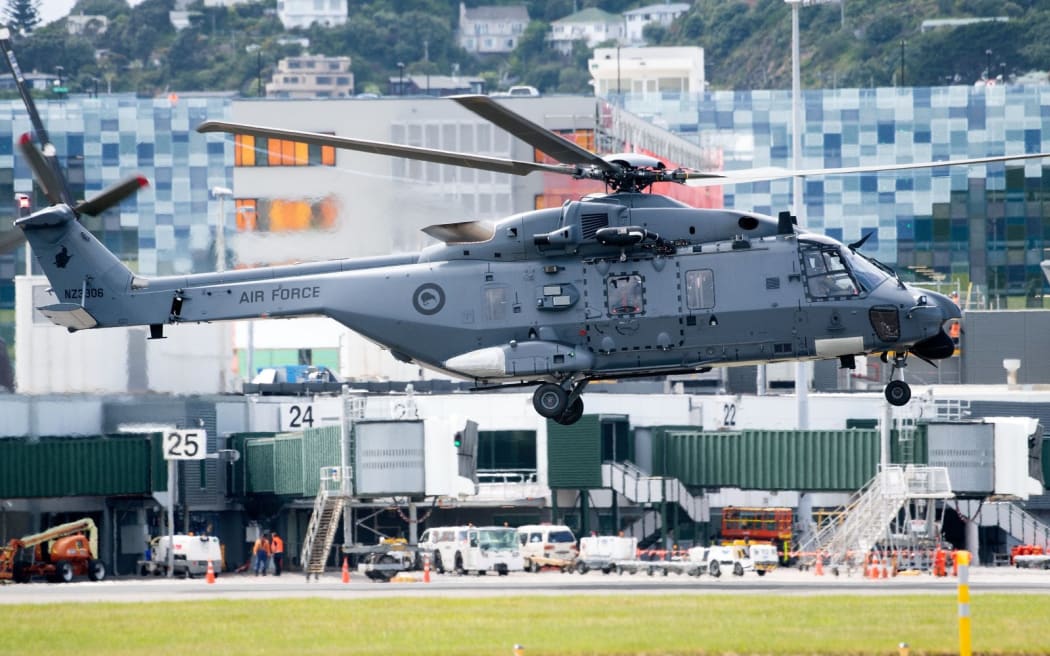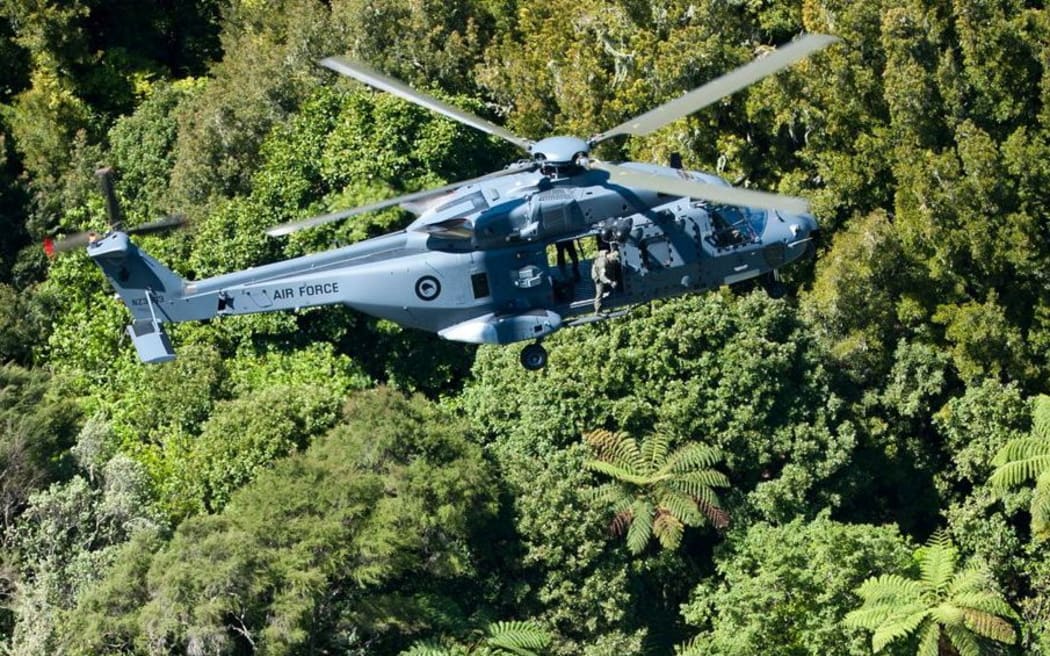
A New Zealand Air Force NH90 helicopter carrying Britain's Prince Harry with his wife Meghan, the Duchess of Sussex, takes off from Wellington on 29 October, 2018. Photo: MARTY MELVILLE / AFP
New Zealand faces higher hurdles using its military helicopters alongside its defence partners now that Australia is switching choppers.
Australia, which grounded its fleet after a water landing last month, is switching to US-made machines.
So too is Norway, which is fed up and wants half-a-billion dollars back from NHIndustries (NHI), the European manufacturer of the NH90 helicopter range.
France and Germany are changing their maintenance approach to try to keep theirs in the air longer.
But the Defence Force (NZDF) said it was getting acceptable flying time from its eight NH90s, and would also stick with its existing "simple" maintenance contract.
It was "not insulated" from the challenges others with NH90s faced and may explore options in future, it told RNZ.
One problem is looming.
"In future, modifications… to ensure interoperability with Australia and other defence partners will be more complex and potentially more expensive for New Zealand, but not impossible," it told RNZ.
An historical Cabinet paper just released to RNZ shows having the same choppers as defence partners was a major reason for the $770m deal - $250m over budget - in the first place.
It had saved money taking that route, Defence said.
It "reduced non-recurring engineering effort for NH90 modifications by sharing them across both Australian and NZ … fleets."
But not any longer. Some military publications have held New Zealand up as an example of NH90 reliability, and the NZDF fleet was the poster child for an NHI online post last month, around the time a sister-ship - the MRH90 - was engaged in a forced landing in shallow water off a New South Wales beach when an engine failed.
A response to an Official Information Act request showed typically six out of the eight-strong fleet in New Zealand were fully airworthy at any one time in 2022. About two - or a quarter of the fleet - were usually not available to fly.
The Cabinet paper suggested about 80 percent availability was expected.
NHI has been approached for comment.

An Air Force NH90 helicopter in action. Photo: Supplied / NZDF
Australia and Norway have blamed a lack of spare parts, in part.
Both countries have grounded their fleets at times, as New Zealand did in 2017 for about three weeks after one of the twin-engine aircraft lost power in one engine near Blenheim.
"No matter how many hours our technicians work, and how many parts we order, it will never make the NH90 capable of meeting... requirements", Norway's Defence Minister said in March.
In 2015 New Zealand First called the NH90 purchase a scandal, and in 2017 one of its MPs - Ron Mark - claimed the choppers had soaked up $3.3m in spare parts in just two years.
Three years later as defence minister, Mark ordered a $20m upgrade of the NH90s - an upgrade made less risky and expensive, he said, because costs were shared with partners - including Australia and Norway.
The newly released Cabinet paper, that is undated, argued "an important factor in deploying aircraft overseas is their interoperability with other nations".
"It is expected that future multilateral operations will be built around NH90 capability."
The Cabinet paper, released last month after RNZ's Official request last November, said NH90s would need to be flown for more hours than the manufacturer recommended - 350 hours, versus 330.
"While this is above the engineering design flying rate, it is assessed to be manageable."
It showed $520m was available for the deal, leaving Defence $250m short - "due to the greater than expected unit cost". It proposed delaying other projects to make up the difference.
It also laid out how Defence also needed six new smaller and training choppers, which it estimated would cost $70m to buy. In the event, it cost double that, almost $140m.
The paper also said operating the whole new NH90 and light-chopper fleet would cost $19m more than operating the Iroquois and Sioux machines they replaced.
The eight NH90s - plus one for parts - were bought for almost $800m and delivered between 2012 and 2014 by NHI, owned by Airbus Helicopters and set up to be NATO's prime chopper contractor.
NZDF "has continued to achieve acceptable NH90 availability as evidenced by the fleet's significant contribution to recent flood response efforts in Gisborne and Hawke's Bay", it told RNZ.
Australia, by contrast, spent $37m on private choppers in 2021 to make up for NHI machines being out of service - and a defence chief estimated operating a Taipan was costing "$48,000 an hour".
Defence faces another big chopper choice: A $1 billion-plus replacement of its eight Seasprite frigate helicopters. A tender would go out soon for proposals, it said.




